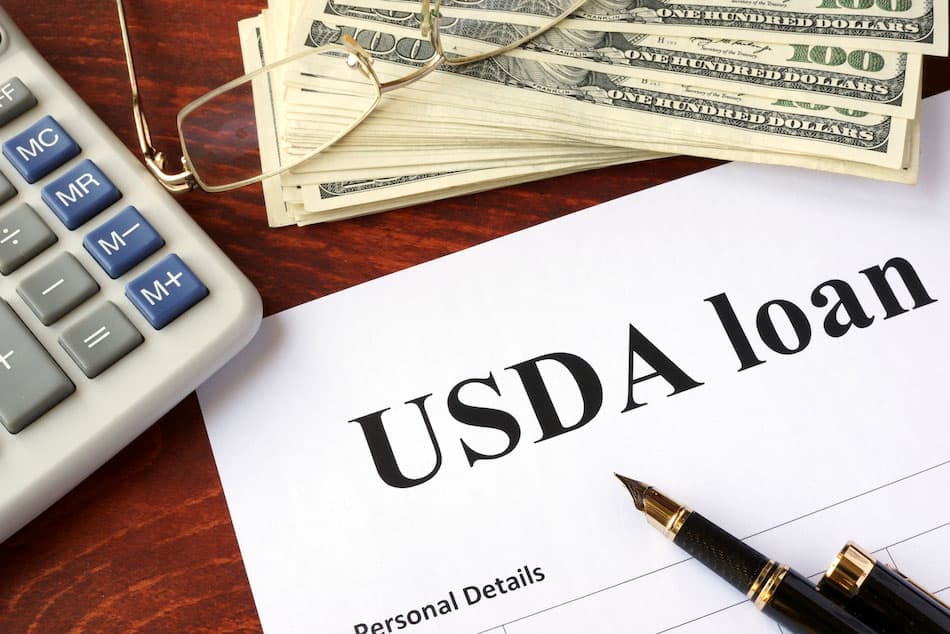conventional loan

WHAT IS A CONVENTIONAL MORTGAGE LOAN?
Conventional mortgage loans are one of the most popular types of mortgages offered by banks, credit unions, and mortgage companies. They feature competitive interest rates and affordable down payments, making it easier for borrowers to become homeowners.
There are several types of conventional loans, including:

Conventional Loan Requirements
Your credit score is one of the most important requirements in conventional mortgage loans. To qualify for a conventional home loan, lenders will require a credit score of at least 620. But if you want to receive a lower interest rate and better deals, you'll need to improve your credit score to at least 740.
As of 2022, most areas in the U.S. have a loan limit of $647,200 for a one-unit property. High-cost areas such as San Francisco or New York City will also have higher loan limits of $970,800 for a single-family home. If you need more than that, you might need to opt for a jumbo loan.
Having a certain amount of funds in your bank account is not enough to qualify for a conventional loan. You need to prove to the lenders that you earn enough income to comfortably settle the monthly mortgage payment. To verify this, your mortgage lender will require you to provide documentation which might include the following:
- A month of pay stubs that demonstrate your income; also, a year-to-date income.
- Two years of federal tax returns.
- Two years of W-2 statements.
- Proof of Income letter from your employer
Lenders would feel assured if they see proof of at least two years of steady income. This means that there should be no gaps in employment during this time. If ever you change jobs, it should be in the same field. Switching jobs from, let's say, a teacher to a firefighter, with less than two years on the new job, can most likely fail your mortgage application.
If you're self-employed, your main income verification would be your tax returns. But lenders would still want to see proof of stable income for the past two years.
If you receive additional forms of income such as alimony, child support, or bonuses, you will also need to provide documentation for those.
PMI is required by lenders if you paid less than a 20% down payment. The purpose of PMI is to protect the lenders in case you default on the loan. However, unlike FHA's mortgage insurance premium (MIP), PMI automatically cancels once your loan-to-value (LTV) ratio reaches 78%.
LTV is calculated by dividing your mortgage balance with the new appraised value of your home. For example, if you bought a home for $200,000 and you paid off $50,0o0 in monthly payments, you would have a mortgage balance of $156,000. Now let's say you've made improvements and renovations which increase your home's value to $220,000. Your LTV would then be about 70.9%.
Here's how it was calculated:
$156,000/$220,000 = 0.709
0.709 x 100 = 70.9%
If a friend or relative is going to help you with the down payment, you'll need to present gift letters to certify that the money you received is a gift and not a loan that requires repayment. Also, these letters should be notarized.
Most conventional mortgage lenders would want a DTI ratio of at least 43%. Although others would allow up to 50%, you might need some "compensating factors" such as a higher credit score to qualify.
Contrary to popular belief, you don't need a 20% down payment to buy your first home with conventional mortgage loans. Nevertheless, making a bigger down payment would reward you with lower monthly payments and lower mortgage rates.
The down payment you need to provide depends on your situation:
- If you're a first-time homebuyer, you can put as low as a 3% down payment.
- If it's no longer your first time, your down payment requirement would be 5%.
- If you're buying a duplex, you'll be required to put 15% down. If the property has more than two units, you'll need to put 20% down.
- For jumbo loans, you'll be required to put 20-40% down.
For self-employed borrowers, the lender often requires an Internal Revenue Service (IRS) Form 4506-T. This form allows the lender to receive a copy of your tax returns from the IRS. Additionally, lenders might also request verification from a certified public accountant to confirm your income.
Other Documentation
Your lender will need a copy of your driver's license or state ID card. They may also ask for your Social Security number and your signature, so they can pull your credit report.
Types of Conventional Loans

Conforming Conventional Loan
The main roles of Fannie Mae and Freddie Mac are to provide liquidity to the U.S. housing finance system. They do this by purchasing mortgages from private lenders, packaging them into mortgage-backed securities (MBS), and then guaranteeing investors a timely payment on the principal and interest.
However, Fannie Mae and Freddie Mac are not allowed to purchase mortgages that exceed the loan limits set by the FHFA. But with the guarantee and funds from Fannie Mae and Freddie Mac, lenders can then offer the home loan program to borrowers without worrying too much about the risk.
Additionally, most lenders love working with a conforming conventional loan as it is easier to bundle and sell.
Jumbo Conventional Loans
Since jumbo loans offer more funding than conforming loans, they are often associated with luxury homes. However, jumbo loans also come with stricter lending requirements. This includes having a stellar credit score of 700 or higher, a DTI of 43% or lower, and a down payment of 20-40%.


Portfolio Loans
Portfolio loans are mortgages that don't conform to the standards set by Fannie Mae, Freddie Mac, or other investors. So instead of selling these mortgages, lenders would opt to keep these loans in their own investment portfolios, hence the term "portfolio loans".
Since these loans are in-house programs, the lenders can set their own guidelines and can create workarounds on the lending requirements. This can make it easier for borrowers to qualify.
However, since portfolio loans don't have guarantors, they present a higher risk for the lenders. So oftentimes, this loan program comes with higher fees and interest rates. Additionally, because of the risk involved, portfolio loans are not commonly offered by most lenders.
Subprime Conventional Loans
Since subprime borrowers have a high probability of defaulting on the mortgage, lenders impose high-interest rates and fees on their loans.
Subprime conventional loans are not inherently bad. They are useful for borrowers who are having trouble financially, allowing them time to build up their credit and qualify for a better interest rate.


Amortized Conventional Loans
With an amortized conventional loan, you'll be paying a fixed monthly mortgage payment until the term ends. Your lender would divide these monthly payments between the principal and the interest.
During the first months, a larger share of your payment goes toward the interest. For example, let's say you have a $300,000 loan with a 30-year term, 3.5% interest rates, and a monthly payment of $1,347.13. So in your first month, your $1,347.13 will be split into $472.13 for the principal and $875 for the interest. But eventually, you'll be paying more for the principal and less for the interest.
Conventional mortgage loans often have flexible terms. However, you need to keep in mind that the length of the term will affect the amount of your monthly payment.
Adjustable Conventional Loans
Initially, ARM starts off with a fixed interest rate, which is often lower than the current market rate, that will last for a certain length of time. Once that time is up, the interest rate will then change depending on the current market.
Most borrowers would stay away from an adjustable loan because of its instability. But others choose this loan program to take advantage of the lower interest rates and monthly payments during the early years, which allows them to save hundreds of dollars a month. ARM is often a great choice if you're not planning to stay in your purchased house for a long time.

Conventional Loan Rates And Benefits
Lower Monthly Fees
Great down payment reward
Multi-purpose
Higher Loan Limits
Flexible Loan Terms
Who May Not Qualify for A Conventional Loan?
More specifically, this mortgage would be tough for those who have:
For example, if you're a first-time homebuyer who hasn't built enough credit history yet, you may try applying for an FHA loan. Once you have enough credit score or when you've reached an LTV ratio of 78%, you can then refinance into a conventional loan.
Advantages of a Conventional Loan
Competitive Interest Rates
Low Down Payments
PMI Can Eventually be Canceled
Choice Between Fixed or Adjustable Interest Rates
Can be Used for All Types of Properties
How is a Conventional Loan Different From Other Loan Types?

Conventional Loans Vs. VA Loans
A VA loan is a mortgage program guaranteed by The Department of Veterans Affairs. This type of loan is only available for veterans, active-duty servicemen, and their surviving spouses.
Although VA and conventional loans have similar requirements, VA loans do not require a down payment or mortgage insurance. However, borrowers would have to pay a funding fee which will cost about 2.3% of the loan amount. This one-time fee will be used to support the VA loan program. The funding fee can be paid in full upon closing or be included in the loan and paid over time.
Another appealing feature of a VA loan is that it doesn't have a loan limit. However, the amount you can borrow will still depend on your ability to pay.
VA loans can only be used to purchase a home that will become your primary residence. And although there's no limit to how many times you use a VA loan, you can only have one VA loan at a time.
Conventional Loans Vs. FHA Loans
Federal Housing Administration (FHA) loan is another popular loan program that is often pitted against a conventional loan. It's a government-backed mortgage and is often the choice for first-time borrowers who haven't built adequate credit scores yet.
Just like a conventional mortgage, an FHA loan requires a mortgage insurance premium (MIP) if you have less than a 20% down. However, unlike private mortgage insurance, MIP will not automatically cancel and will remain for the life of the loan.
So even though the minimum credit score requirement for FHA loans is just 500, it will eventually become more expensive than conventional mortgages.


Conventional Loans Vs. USDA Loans
The U.S. Department of Agriculture (USDA) loan is another government-backed mortgage program. But the key difference between USDA and a conventional mortgage is that the USDA loan can only be used to purchase homes in places that fit USDA's description of a rural area. Additionally, the home you purchase with a USDA loan should be your primary residence.
With a conventional mortgage, the bigger and more stable your income is, the more likely lenders are to accept you. But with a USDA loan, your household's income should not be more than 115% of the local median salary.
And although USDA loans don't require a downpayment and mortgage insurance, you'll be asked to pay a funding fee upon closing and monthly.
The Bottom Line
There are a lot of choices when it comes to mortgages. But conventional loans stand out from the rest because of having low down payments, flexible terms, and competitive rates. And although it can be challenging to qualify for, the benefits you'll receive in the long run will make it worthwhile. As long as you have good credit scores, a stable source of income, and have the ability to pay the down payment and closing costs, you are likely to qualify for conventional home loans.
Need help with your conventional mortgage application? Our mortgage broker in Tampa is more than ready to help you. With our experience and wide network of lenders, you'll have a stress-free mortgage process. Our mortgage experts will be with you from the application until you get the keys to your home. Call Ebenezer Mortgage Solutions today at (813) 284 - 4027 so we can start working on getting your dream home.


